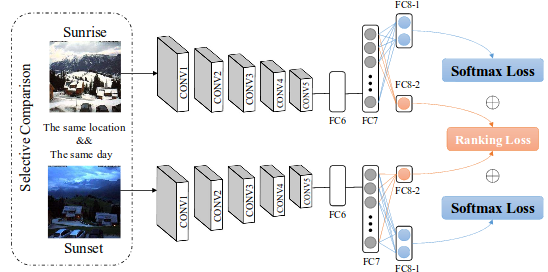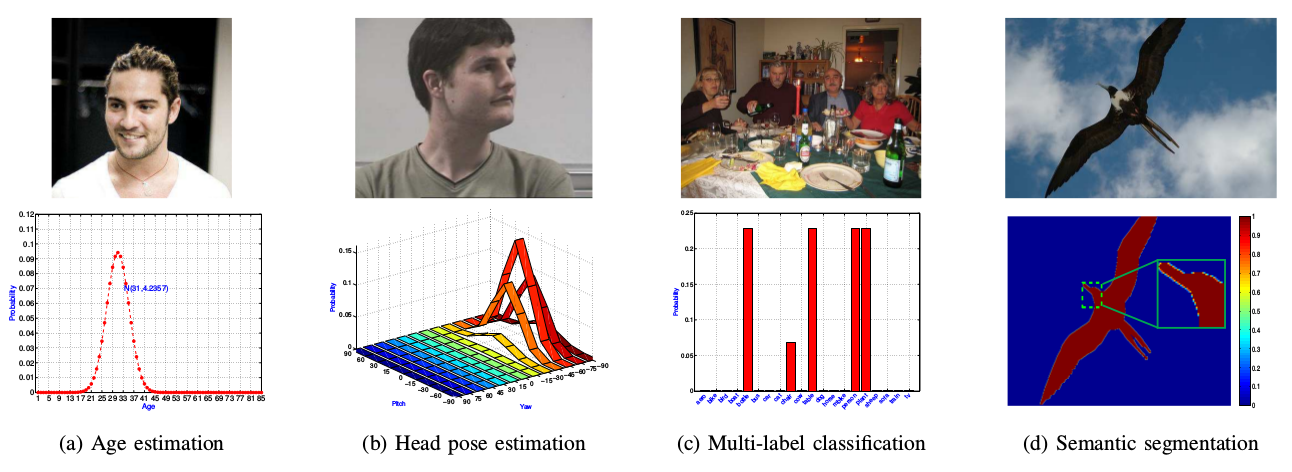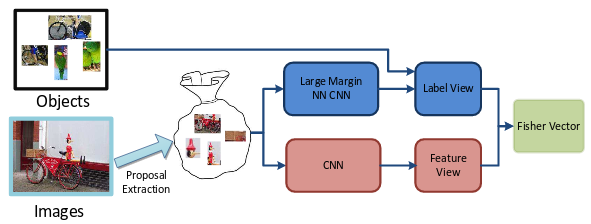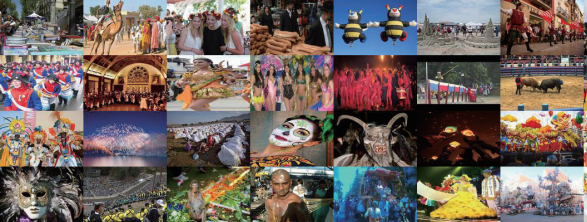Exploit Bounding Box Annotations for Multi-label Object Recognition
Hao Yang, Joey Tiany Zhou, Yu Zhang,
Bin-Bin Gao, Jianxin Wu and Jianfei Cai
In: Proceedings of the IEEE Conference on Computer Vision and Pattern Recognition (
CVPR 2016), Las Vegas, NV, USA, June 2016, pp.280-288.
[
Paper ]
[
Abstrcat ]
Convolutional neural networks (CNNs) have shown
great performance as general feature representations for
object recognition applications. However, for multi-label
images that contain multiple objects from different categories,
scales and locations, global CNN features are not
optimal. In this paper, we incorporate local information
to enhance the feature discriminative power. In particular,
we first extract object proposals from each image. With
each image treated as a bag and object proposals extracted
from it treated as instances, we transform the multi-label
recognition problem into a multi-class multi-instance learning
problem. Then, in addition to extracting the typical
CNN feature representation from each proposal, we propose
to make use of ground-truth bounding box annotations
(strong labels) to add another level of local information
by using nearest-neighbor relationships of local regions to
form a multi-view pipeline. The proposed multi-view multiinstance
framework utilizes both weak and strong labels
effectively, and more importantly it has the generalization
ability to even boost the performance of unseen categories
by partial strong labels from other categories. Our framework
is extensively compared with state-of-the-art handcrafted
feature based methods and CNN based methods on
two multi-label benchmark datasets. The experimental results
validate the discriminative power and the generalization
ability of the proposed framework. With strong labels,
our framework is able to achieve state-of-the-art results in
both datasets.
[
BibTeX ]
@inproceedings{yang2016exploit,
title={Exploit bounding box annotations for multi-label object recognition},
author={Yang, Hao and Zhou, Joey Tianyi and Zhang, Yu and Gao, Bin-Bin and Wu, Jianxin and Cai, Jianfei},
booktitle={Proceedings of the IEEE Conference on Computer Vision and Pattern Recognition},
pages={280--288},
year={2016}
}
[
CCF-A]










